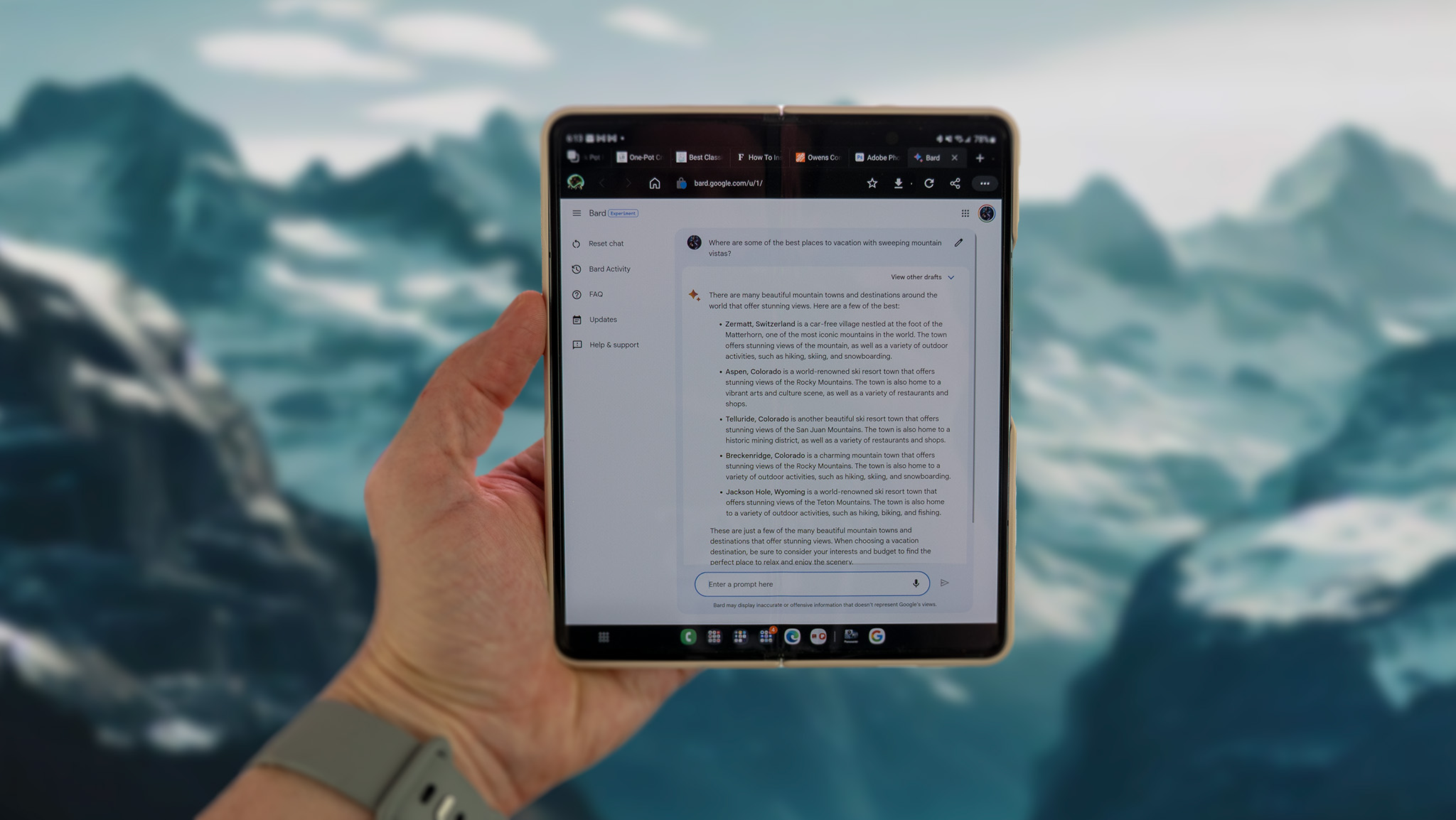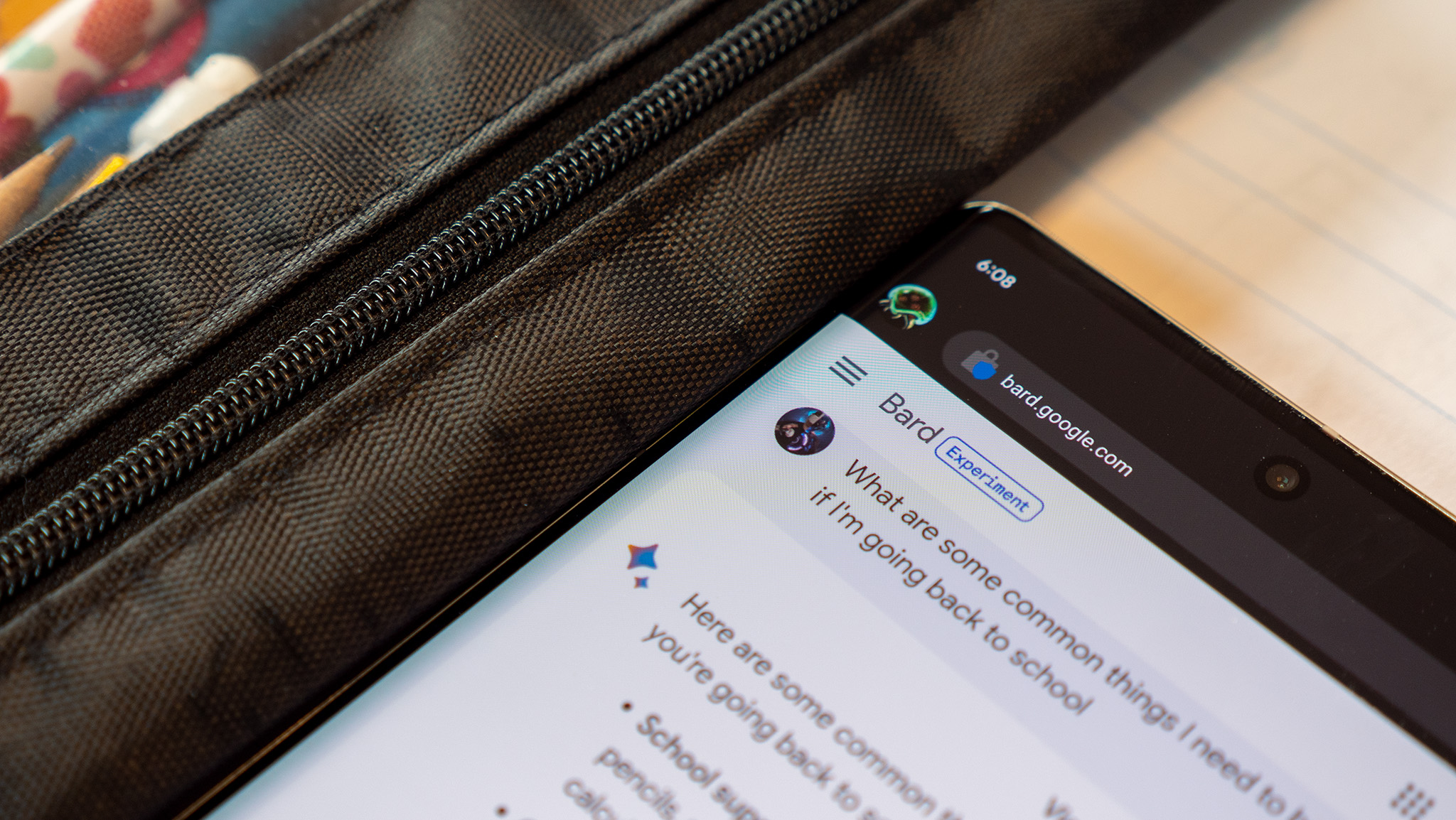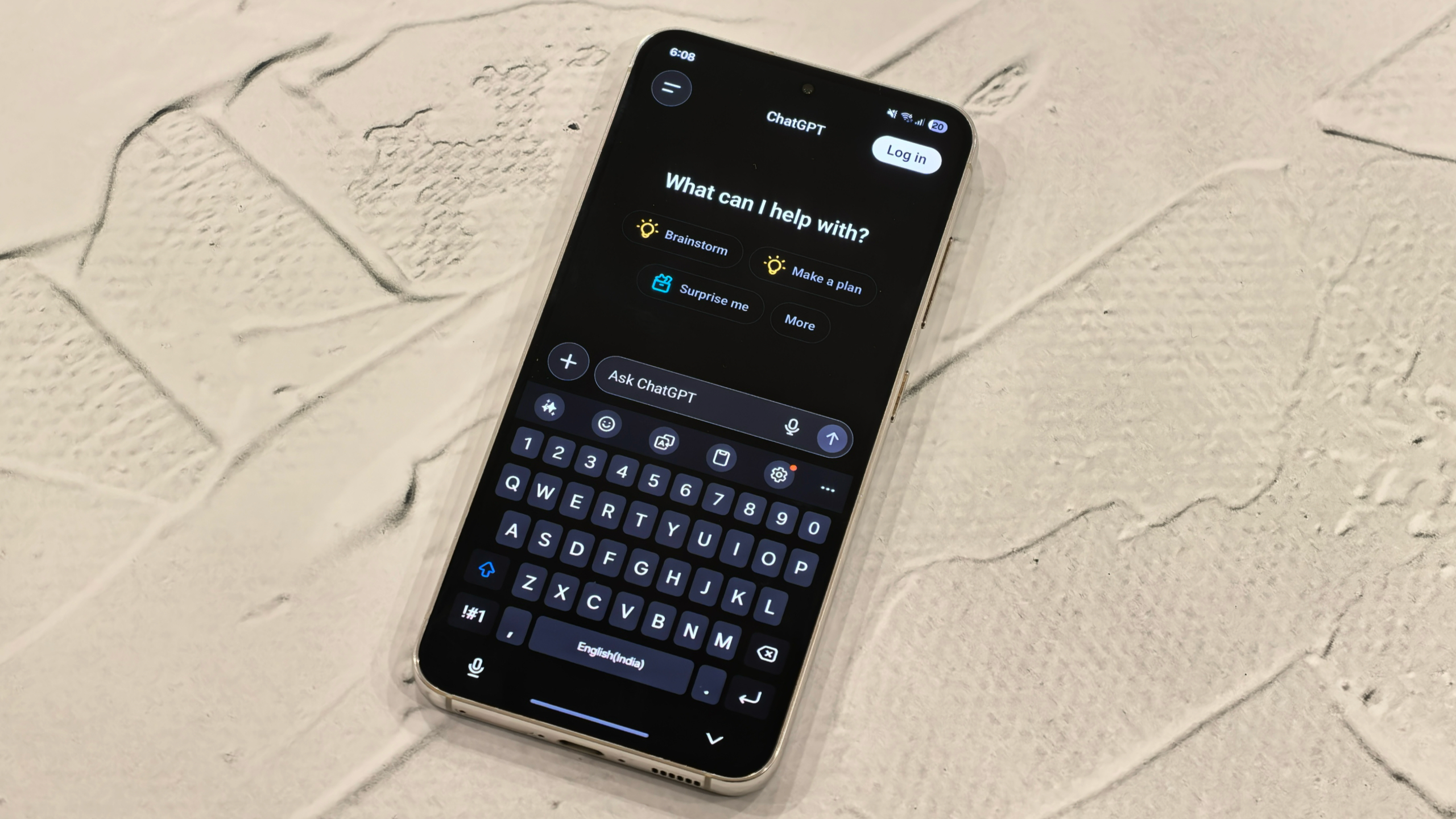A Google Bard app isn't coming to your phone, but it's coming to your apps
Google is taking a different approach to bringing its ChatGPT competitor to the masses.

What you need to know
- During the Google I/O 2023 Keynote, a number of AI and Google Bard updates were announced.
- Starting today, Google Bard is no longer on a waitlist and is available in more than "180 countries and territories - with more coming soon."
- Bard is also gaining new features, such as the ability to generate images from prompts.
We're still trying to unpack everything that Google is announcing at I/O 2023, but one hot topic is sure to be Google's response to ChatGPT and Microsoft Bing. Google Bard was unveiled to the world just a few short months ago, and since then, the landscape of Large Language Models and the accompanying services has grown.
While a lot of focus has been on the hardware that Google intends to announce, there are many interested to see how Bard will be made accessible to more users. Going along with that, Google announced quite a few changes that will be available starting today or should be available in the near future.
Perhaps most importantly, Google Bard is now available in more than 180 different countries and territories, as the waitlist has been completely removed. Google is also planning to bring this to more regions but did not specify which regions and when it would arrive.
Google has also been working hard on ways to improve the overall experience when using Bard. The company announced that "Bard will become more visual both in its responses and your prompts." It's doing this by leveraging and implementing the power of Google Lens, providing rich responses to your prompts.
Going even further, you'll be able to use your own images in a prompt to Bard. From there, you can upload a photo of your dogs and "prompt Bard to “write a funny caption about these two.” Using Google Lens, Bard will analyze the photo, detect the dogs’ breeds, and draft a few creative captions — all within seconds."
A few other improvements to Bard are coming, as a Dark theme is now available, which has been an obvious omission until now. Google states that developers have been providing quite a bit of feedback, and that's why Bard is gaining "more precise" source annotations for code or other content.
Also coming soon will be a new "Export" button, complete with "Export Actions." The former comes from a partnership between Google and Replit, allowing you to "export and run code, starting with Python." The latter is just the latest step in Google's plans to implement Bard into more apps. With Export Actions, "you can write an email invitation," then click the "draft in Gmail button".
Get the latest news from Android Central, your trusted companion in the world of Android
Lastly, Google detailed many of the different ways it plans to implement and integrate Bard into "Google apps and services you may already use." These include the likes of Docs and Gmail, but you'll also soon see Bard show up in Adobe Firefly.

In one example, Bard was used to plan a "birthday party for my 7-year-old who loves unicorns, and I want a fun image to send out with the invitations." After entering the prompt into Bard, the Adobe Firefly extension will generate some images, allowing you to pick which one you want to use, and download it to your phone.
No Bard app for you

Suspiciously missing from all of this is any mention of Google making Bard more accessible from your phone. It seems that the company doesn't have plans to release a standalone app. Perhaps that will change in the coming months, but as it currently stands, if you want to use Bard, you'll have to do so from your web browser.
So we're committed to rolling out Bard as an experiment. And a standalone web experience is allowing us to focus on the direct engagement with a large language model. And so, we're focused at this time on keeping it a web-only experience to continue our engagement and lessons with users, and nothing more to announce beyond that.
Jack Krawczyk, Product Lead, Google Bard
Unlike ChatGPT, which is now powering Microsoft Bing and is just a tap away from within the SwiftKey app, Google is content with its current strategy. Instead of releasing a dedicated Bard app, the company is focused on ways to improve apps that you are already using on a daily basis.
This can be seen as both a win and a loss, as we would have loved to see similar integration with Bard and Gboard. Even the previously-rumored Bard widget would have been sufficient enough, as opposed to needing to create a browser shortcut for your home screen.

What's important to remember is that the race between ChatGPT and Bard is only getting started. And it's definitely a marathon and not a sprint, which is likely why Google has taken a completely different approach when it comes to the functionality and capabilities of Bard.
But it just goes to show that Google is set on changing your life in different ways, relying on the apps that you already use. And this just might be the best way to go about it, as opposed to trying to force users to try something different that can completely disrupt how they use their devices.

Andrew Myrick is a Senior Editor at Android Central. He enjoys everything to do with technology, including tablets, smartphones, and everything in between. Perhaps his favorite past-time is collecting different headphones, even if they all end up in the same drawer.



